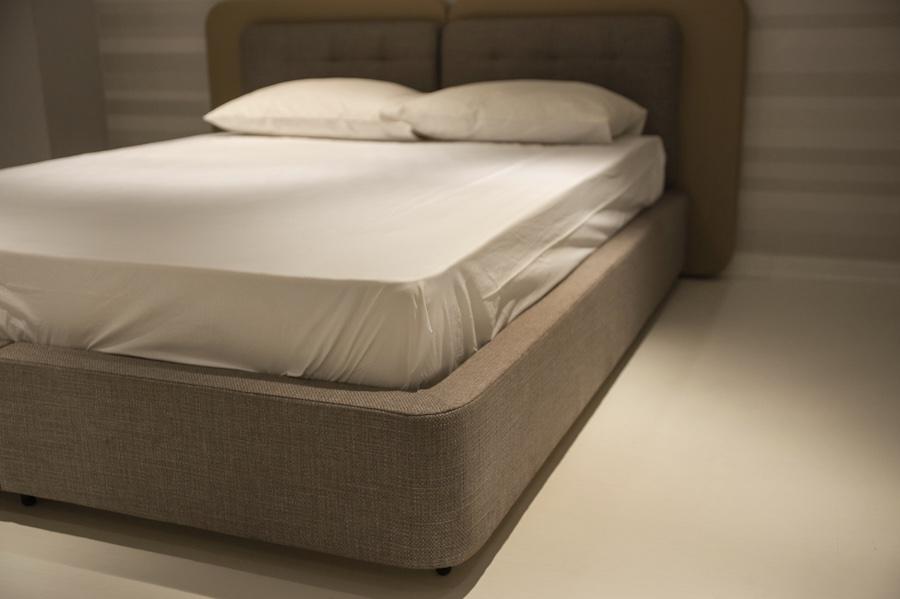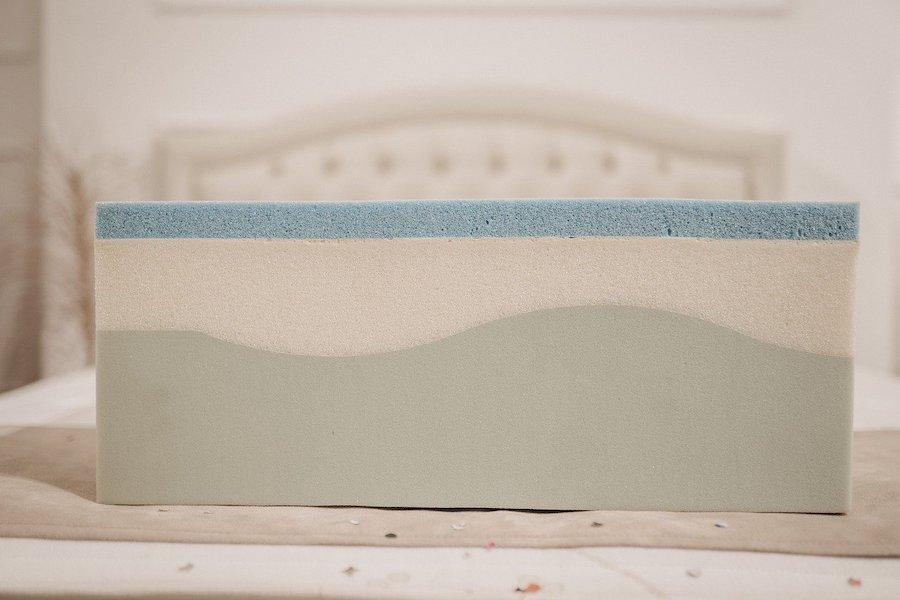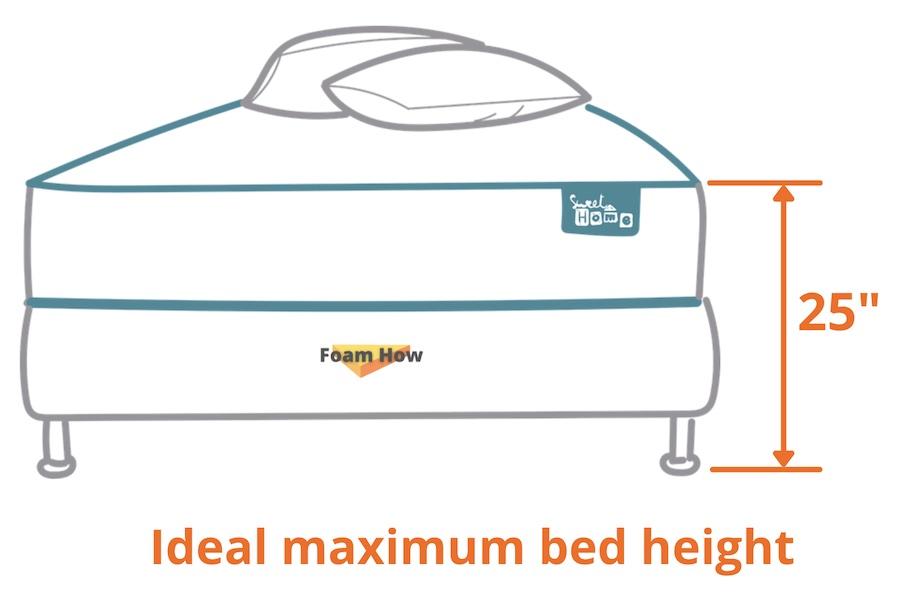Several factors determine the quality of a memory foam mattress. Here’s the guide on what size memory foam mattress is best for your needs.
The right mattress – which includes memory foam, could be the difference between a restful night’s sleep and shoulder, neck, or back pain.
Here I’ll be providing the best guide on what size is best for most people. Let’s start with a quick summary…
In general, memory foam mattress thickness ranges from 6 to 14 inches. 10 to 14-inch thick mattresses that include memory foam are considered good enough to provide overall support for most people. They are durable and can last up to 15 years. Density and Firmness are key factors to be aware of.
Thicker mattresses also tend to be softer than thinner mattresses, but that isn’t always the case. So you need to be sure to check the numbers for each mattress.
As I’ve alluded to, memory foam mattress quality is largely determined by a few key factors. Namely, thickness, density, and indent load deflection (ILD) properties. All of these determine the mattress’s performance in daily use and contribute to its durability and longevity.
You can find out more about density and firmness here.
So bigger isn’t always necessarily better when it comes to choosing the right memory foam mattresses.
A memory foam mattress has several layers, each of which adds to the total mattress size when placed together. Combinations of different layers can have a dramatic effect on the finished product.

Memory foam density
High-density, medium-density, and low-density memory foam mattresses are readily available on the market.
High-density foam is widely considered to be the most long-lasting. Medium-density foam provides a good balance of comfort and firmness, making it a good option for single people or couples who share a bed.
Since lower-density foams are easier to break in than higher-density foam, your body can readily adapt to the memory foam of a low-density mattress more quickly.
When comparing density ratios, the weight of the foam is what is being considered here.
Medium-density foam, for example, normally weighs 4 to 5 pounds per cubic foot, whereas high-density foam can weigh up to 10 pounds per cubic foot.
These general rules apply to memory foam mattresses, but all types of foam mattresses to a greater or lesser degree.
You can find more information about foam density here.
Memory foam firmness
What size memory foam is best is also determined by its firmness.
The same as foam density is a measure of how heavy and durable memory foam is, firmness is a measure of how soft the memory foam is.
Known as Indent Load Deflection, or ILD, it is portrayed as a two-digit number. The number is derived from a standardized test to determine how much compression the memory foam would take to compress one-quarter of its thickness.
The higher the ILD number, the firmer the foam. A lower number indicates that there will be more of a “sinking” effect when using the mattress. So firmness is equally important when selecting your memory foam mattress.
For most people, a firmness of 25 – 35 is often seen as a good range for a memory foam mattress. So test out foams around this firmness rating. Along with the density rating, you should be better equipped to find your “sweet spot”
You can learn more about firmness here when considering what size memory foam mattress is best for you.
Memory foam thickness
The thickness of memory foam mattresses varies from 6 to 14 inches. And thick mattresses are generally softer than thin mattresses.
Choosing a thinner mattress, however, will probably not detract from the natural comfort of a memory foam mattress.
For most mattresses that have multiple layers, the key support system is the base layer of foam. Memory foam is not normally used at this lower level. Each level adds extra softness and due to its general firmness rating, memory foam is used more in the upper layers of a mattress.
It’s also worth noting that adding a memory foam mattress topper to your mattress will help improve its overall thickness and comfort.
Mattress thickness general category
The majority of high-quality mattresses are 8 to 14 inches thick. The table below shows how mattresses are classified according to their thickness.
| Thickness | General Category |
|---|---|
| 2 – 5 inches | Low Profile |
| 5 – 8 inches | Slim |
| 8 – 12 inches | Standard |
| 12 – 16 inches | Thick |
| 16+ inches | Extra thick (tall) |
While the first two rows refer to “thin mattresses,” there is a distinction to be made between low profile and slim mattresses.
Cribs, camp beds, and fold-away beds are all examples of low-profile mattresses.
Low-profile crib mattresses are ideal for toddlers, and they can also be used in guest rooms when you need an occasional bed for a visitor.
However, if you do have occasional guests, try opting for a separate thicker mattress – as low-profile mattresses aren’t usually as comfortable for an adult. So I wouldn’t recommend them for people who often host out-of-towners.
Slim mattresses have several layers of foam for added comfort and longevity. These mattresses are more comfortable for adults and are a good option for those with reduced mobility who want to avoid heavy mattresses.
Memory foam size
Even though memory foam mattresses are considered specialty mattresses, they are available on Amazon in all regular mattress sizes, making them easy to match with your existing bed frame.
You’ll find the perfect memory foam mattress to suit your needs, whether you have a single bed or a luxurious California king, of which there are various types available easily through online resellers like Amazon.

Mattress thickness: Things to consider
If you want a comfortable and long-lasting mattress, it should be at least 8 inches thick, with a 2 to 3-inch thick comfort layer and a 5 to 6-inch thick base layer as a minimum.
The softer a mattress feels, generally the thicker it is. In this part, we’ll go over the factors to think about when choosing a mattress thickness.
Mattress thickness based on body Type
How your mattress responds to your body weight is determined by the thickness of the mattress and the materials used to make it.
You should choose a mattress that is supportive enough to provide a peaceful night’s sleep, and your weight plays a role in this decision.
Less than 130 pounds: For lighter people, mattresses that are 10 inches thick or greater are a viable option. The thicker comfort layers adhere to their bodies, minimizing the potential for aches and pressure points.
Between 130 to 230 pounds: Depending on sleeping positions, 130 to 230-pound sleepers can opt for 10 to 12-inch thick mattresses. Side sleepers may prefer 12-14 inches. Check materials used to create each layer when purchasing a thick mattress to understand how they affect comfort.
Over 230 pounds: Plus-size sleepers should ideally choose mattresses that are 12 to 14 inches thick if opting for a firmer choice, with a dense support layer that is at least 6 inches thick. Mattress sinkage can be avoided by using thicker comfort layers. Opt for 14 – 16 inches in less firm mattresses.
Mattress thickness when sharing a bed
Thicker mattresses, which have several layers and a tall base layer, can provide more protection than thinner mattresses.
When sharing a bed with a partner, the weight on your mattress is greater than when you sleep alone. A thinner mattress will sag under the combined pressure. A mattress at least 12 inches thick is needed if you’re sharing your bed. And perhaps a firmer mattress than when sleeping alone.
Bed Base
Consider the height of your bed when choosing the thickness of your new mattress. Your bed’s maximum height, including the bed base and mattress, should not exceed 25 inches.

Maximum bed height from floor
If your mattress is 18 inches thick, then your bed base should be no more than 7 inches in height.
It may be difficult for people with limited mobility, such as back pain, joint pain, or arthritis, to get into and out of taller beds.
Likewise, a bed nearer to 25 inches can make it easier for people with mobility challenges to get in and out of bed.
Very thick memory foam mattresses
Thick or very thick (12 – 16 inch) mattresses are usually softer than thin mattresses, providing a more comfortable surface for the hips, knees, and other sensitive areas.
Conversely, thick mattresses have some disadvantages, such as being heavier and generally more costly.
Consider the thickness of each layer and how it affects the mattress’s feel when shopping for a new mattress. Thicker mattresses can more readily support the weight of two adults, while thinner mattresses are more likely to sag.
Disadvantages
Here’s a list of the disadvantages that can come with a thick or very thick memory foam mattress.
- Since they have more internal layers and therefore a greater number of foam materials, they can be more costly.
- Because of the additional layers, the mattress will be heavier. It will therefore be more difficult to lift when making the bed or transferring it to another space.
- With an incorrect base, thicker beds can end up being too tall, making getting in and out of bed difficult for people with limited mobility.
Should I get a 10 or 12 inch memory foam mattress?
10 – 12 inch mattresses are considered a “standard” size. These are ideal for people of 130 – 230 lb in weight. Opt more toward 12 inches for side sleepers, who should also consider a 14-inch mattress. 12 inches is the minimum recommended for lighter couples when sharing to avoid sagging.
Should I get a 10 inch or 12-inch memory foam mattress?
When deciding between a 10 inch or 12-inch mattress, it’s usually advisable to move towards the higher number. A 12-inch mattress will likely mean you avoid any disappointment with sagging. Side sleepers should ideally aim for a 12 – 14 inch mattress. Pay close attention to density and firmness.
Is an 8-inch memory foam mattress thick enough?
An 8-inch mattress is ideal for those of around 100 lb in weight, or children and teenagers. It can be suitable for those around 130 lb if it has a high firmness rating, or if regularly moving the mattress. An 8-inch mattress is rarely suitable for couples sharing a bed long-term.
What is the best depth for memory foam mattress?
Thickness, firmness, and density all matter when choosing a memory foam mattress. On average, you should aim for a 12 – 14 inch mattress which is considered a standard thickness. For mattresses only made with memory foam, consider a high firmness rating.
More foam help…
I hope this has answered the question of what size memory foam mattress is best. Be sure to check out my other article on types of foam to learn more about which foams perform best for which task.
